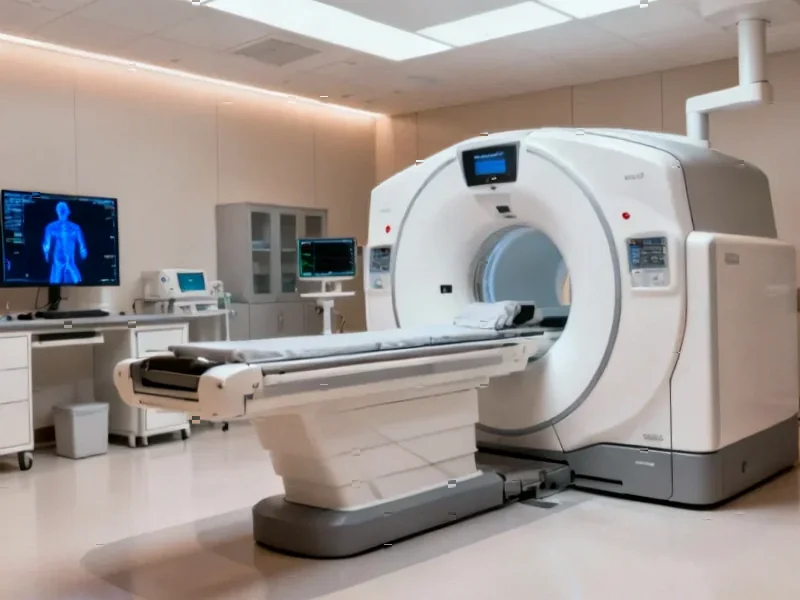According to Forbes, generative AI could save hundreds of thousands of lives while making healthcare affordable for every American, but only if clinicians embrace the technology. With medical costs exceeding $14,000 per person and employer health-insurance premiums projected to rise 9% in January to approach $30,000 annually for families, the system faces unsustainable pressures. The analysis identifies five key transformations: real-time medical literature synthesis, chronic disease management through wearables, closing the “knowing-doing” gap in clinical practice, continuous patient monitoring, and unlocking insights from the 97% of hospital data that currently goes unused. These advances come as national health expenditures continue to climb despite the U.S. ranking last in health-system performance among peer nations. The technical implementation of these systems represents the real challenge ahead.
The Multimodal Foundation
The core technical innovation enabling genAI’s healthcare transformation lies in its multimodal capabilities. Unlike traditional AI systems that process single data types, modern generative AI architectures can simultaneously analyze vision (medical imaging, surgical video), speech (patient-clinician conversations), and text (medical records, research literature). This requires sophisticated fusion techniques where embeddings from different modalities are aligned in a shared latent space. The technical challenge involves managing the varying temporal resolutions of these data streams—continuous vital signs from monitors, episodic imaging studies, and discrete clinical notes—while maintaining synchronization and context awareness across all inputs.
Ambient Clinical Intelligence
One of the most technically sophisticated applications involves ambient listening systems that capture and analyze clinician-patient interactions. These systems use advanced speech-to-text engines trained on medical terminology, coupled with natural language understanding models that can identify clinical concepts, symptoms, and treatment discussions in real-time. The implementation challenges include ensuring privacy compliance, handling overlapping speech in busy clinical environments, and maintaining accuracy across diverse accents and speaking styles. The technical architecture typically involves edge computing for initial processing to minimize latency, with cloud-based analysis for more complex reasoning tasks.
Data Integration at Scale
The promise of analyzing the 97% of unused hospital data requires solving significant data engineering challenges. Hospital systems generate approximately one terabyte of monitoring data annually per facility, creating massive storage and processing requirements. The technical implementation involves creating unified data lakes that can ingest structured data (vital signs, lab results) alongside unstructured data (clinical notes, imaging reports). Data normalization across different vendor systems and legacy EHR platforms represents a major hurdle, requiring sophisticated ETL pipelines and semantic interoperability layers to ensure consistent data representation.
Real-Time Analytics Infrastructure
Continuous patient monitoring through wearables and bedside devices demands a robust real-time analytics infrastructure. This requires streaming data platforms capable of processing high-frequency physiological data with sub-second latency. The technical architecture typically involves time-series databases optimized for medical data patterns, coupled with complex event processing engines that can detect subtle physiological trends indicating clinical deterioration. The challenge lies in balancing sensitivity and specificity—minimizing false alarms while ensuring genuine emergencies are caught early. Surgical robotics integration adds another layer of complexity, requiring real-time computer vision and haptic feedback systems.
Implementation and Validation Barriers
The path to clinical adoption faces significant technical validation requirements. Unlike consumer AI applications, healthcare AI systems require rigorous clinical validation through randomized controlled trials and real-world evidence generation. The technical challenge involves creating reproducible, explainable AI systems that can provide clinical rationale for their recommendations. Model drift—where AI performance degrades over time as patient populations and treatment patterns evolve—requires continuous monitoring and retraining pipelines. Additionally, integrating these systems into existing clinical workflows without creating alert fatigue or additional cognitive load for clinicians represents a human factors engineering challenge of equal importance to the underlying AI technology.
The Regulatory and Security Landscape
Technical implementation must navigate complex regulatory requirements, including HIPAA compliance, FDA approval for medical devices, and emerging AI governance frameworks. The security architecture must protect sensitive health data while enabling the distributed processing required for real-time applications. This often involves sophisticated encryption schemes, zero-trust architectures, and privacy-preserving techniques like federated learning, where models are trained across multiple institutions without sharing raw patient data. The technical teams building these systems must balance innovation velocity with the rigorous validation and security requirements inherent to healthcare applications.




